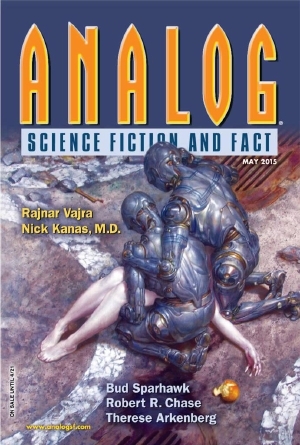In the May 2015 issue of Analog Science Fiction and Fact, alongside fiction from Rajnar Vajra, But Sparhawk, Robert R. Chase, Aubry Kae Anderson, and J.L. Forrest, my story “Arnheim’s World” explores the economics, ethics, and (anti)sociability of terraforming.
Environment, economics, ethics, all stewing in a high-tension dilemma. Exactly the kind of thing you’d expect of me, I hope.
I worked on this piece on and off from 2011 onward, intrigued by the idea of a person wealthy enough and motivated enough to shape a planet in their own image. The plot changed direction several times as I incorporated new concepts and found myself drawn towards one character’s argument or another’s as they addressed the central conflict. A lot of my science fiction stories deal with dilemma, and until I find a resolution that satisfies me they can sit unfinished for a long time. Mind, just because I pronounce myself satisfied with a story’s ending doesn’t mean I think any one character made the right decision–just that I sympathize with them all and find the outcome of events pleasingly…twisty. Or twisted. Sometimes I write an ending I find myself hoping readers will argue with (I still remember reading along with TV Tropes, trying to find loopholes to ‘fix’ “The Cold Equations“).
For “Anheim’s World,” I think the conflict that most preoccupied me is less about economics than about friendship and betrayal–and times when betraying a friend may be the nobler decision.
You be the judge.


 Therese Arkenberg's first short story was accepted for publication on January 2, 2008, and her second acceptance came a few hours later. Since then they haven't always been in such a rush, yet her work appears in places like Beneath Ceaseless Skies, Analog, Daily Science Fiction, and the anthology Sword & Sorceress XXIV. Aqua Vitae, her science fiction novella, was released by WolfSinger Publications in December 2011.
She works as a freelance editor and writer in Wisconsin, where she returned after a brief but unforgettable time in Washington, D.C. When she isn't reading, writing, or editing (it's true!) she serves on the board of the Plowshare Center of Waukesha, which works for social, economic, and environmental justice.
Therese Arkenberg's first short story was accepted for publication on January 2, 2008, and her second acceptance came a few hours later. Since then they haven't always been in such a rush, yet her work appears in places like Beneath Ceaseless Skies, Analog, Daily Science Fiction, and the anthology Sword & Sorceress XXIV. Aqua Vitae, her science fiction novella, was released by WolfSinger Publications in December 2011.
She works as a freelance editor and writer in Wisconsin, where she returned after a brief but unforgettable time in Washington, D.C. When she isn't reading, writing, or editing (it's true!) she serves on the board of the Plowshare Center of Waukesha, which works for social, economic, and environmental justice.